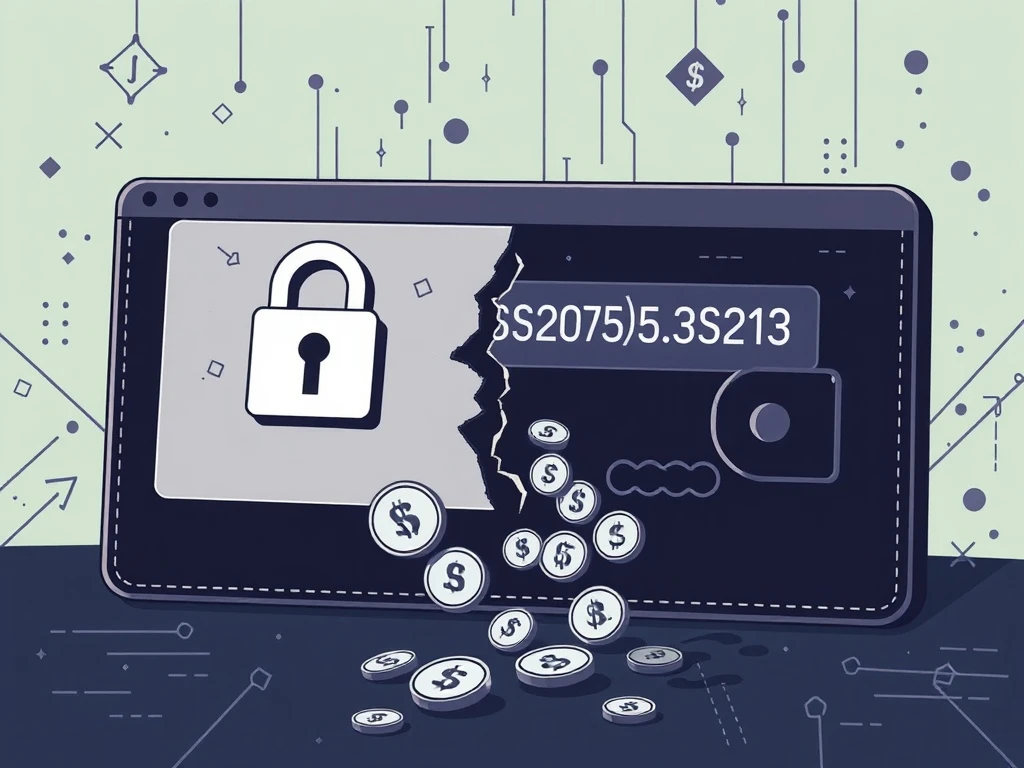Urgent: Bunni DEX Exploit Leads to $2.4M Stablecoin Theft

The decentralized finance (DeFi) landscape recently witnessed a significant incident. Bunni DEX, a platform built on Uniswap v4, experienced a substantial security breach. This Bunni DEX exploit resulted in the loss of approximately $2.4 million in stablecoins. The platform immediately paused all its smart contract functions across various networks. This measure aimed to prevent further losses and allow for a thorough investigation.
Understanding the Bunni DEX Exploit and Immediate Response
On-chain data from multiple Web3 security firms confirmed the exploit. Attackers successfully manipulated Bunni’s liquidity calculations. The platform’s team confirmed the incident on X, stating, “The Bunni app has been affected by a security exploit.” They further added, “As a precaution, we have paused all smart contract functions on all networks. Our team is actively investigating and will provide updates soon.” This immediate action highlights the severity of the situation. The attack specifically targeted Bunni’s Ethereum-based smart contracts. Funds were subsequently drained to an address. This address now holds about $1.33 million in USDC and $1.04 million in USDt. A core contributor to Bunni, @Psaul26ix, urged users to withdraw their funds promptly. They advised, “If you have money on Bunni remove it ASAP.” This advice underscores the urgency for users to protect their assets. Reports indicated that attempts to reach Bunni and Euler for comment were unsuccessful at the time of publication.
The Critical Bunni Liquidity Function Flaw
While a complete technical post-mortem remains pending, initial analyses point to a critical flaw. This vulnerability existed in how Bunni managed liquidity rebalancing. Bunni, which operates on Uniswap v4, utilizes a custom mechanism. This mechanism is known as the Liquidity Distribution Function (LDF). It differs from Uniswap’s default logic. The LDF aims to optimize liquidity allocation across various price ranges. Its goal is to enhance returns for liquidity providers. However, this custom design introduced an unforeseen weakness. Victor Tran, co-founder of KyberNetwork, provided early insights. He explained that the attacker found a way to manipulate the LDF curve. They did this by executing trades of very specific sizes. These carefully chosen amounts triggered faulty rebalancing logic. Consequently, the calculations for each LP share became incorrect. This miscalculation allowed the attacker to gradually drain funds. The attacker executed the exploit multiple times, avoiding immediate detection.
The Mechanics of the Stablecoin Exploit
The stablecoin exploit was not a brute-force attack. Instead, it involved a sophisticated understanding of Bunni’s custom logic. The attacker identified a vulnerability within the LDF’s algorithm. By placing trades of precise values, they could trick the system. This manipulation caused the LDF to misinterpret the value of liquidity provider shares. Essentially, the attacker was able to claim more than their rightful share of the pool. The gradual nature of the draining process is particularly concerning. It suggests a methodical approach by the perpetrator. This method allowed them to siphon off funds over time. It avoided triggering immediate alarms that larger, single-transaction exploits might have caused. The incident serves as a stark reminder. Even custom-built solutions designed for efficiency can harbor vulnerabilities. Rigorous auditing and continuous security monitoring are essential for DeFi protocols.
Broader Context: The Rise of Crypto Liquidity Hack Incidents
The crypto liquidity hack on Bunni DEX is not an isolated event. August alone saw a significant surge in such incidents. Crypto hackers and scammers stole over $163 million across 16 separate incidents during the month. This figure represents a 15% increase from July’s $142 million. While the total amount is 47% lower year-over-year, the trend is troubling. It reflects a rising number of targeted attacks. This increase occurs as crypto markets show signs of renewed momentum. Cybersecurity experts like PeckShield have observed a strategic shift. Attackers are now focusing on centralized exchanges and high-value individuals. This marks a departure from smaller, decentralized targets. The largest loss in August involved a social engineering attack. A Bitcoiner was tricked into sending 783 BTC, worth $91 million, to attackers. These attackers posed as support agents from a crypto exchange and hardware wallet provider. Such diverse attack vectors highlight the evolving threat landscape in the crypto space.
Navigating DeFi Security Breach Risks and User Safety
The Bunni DEX incident underscores the persistent risks associated with DeFi. A DeFi security breach can occur even in protocols built on established foundations like Uniswap. The complexity of custom smart contract logic often introduces new attack surfaces. For users, exercising caution is paramount. It is crucial to conduct thorough due diligence before engaging with any DeFi platform. Understanding the protocol’s underlying mechanisms is vital. Users should also regularly review security audits. Furthermore, promptly withdrawing funds when a security alert is issued is a critical safety measure. The broader crypto community continues to grapple with security challenges. As the industry matures, the focus on robust security practices intensifies. Protocols must prioritize comprehensive audits and ongoing vulnerability assessments. Users must remain vigilant and informed. This collective effort is essential for fostering a safer DeFi ecosystem.
The Road Ahead for Bunni and DeFi Security
The Bunni team is currently investigating the exploit. Their priority is to understand the full scope of the attack. They also aim to implement necessary fixes. This incident serves as a learning experience for the entire DeFi sector. It highlights the importance of peer review and open-source transparency. While custom solutions can offer innovation, they also carry inherent risks. The path to recovery for Bunni will involve regaining user trust. It will also require demonstrating enhanced security measures. Ultimately, the resilience of the DeFi space depends on its ability to learn from these incidents. It must adapt to ever-evolving threat actors. Continuous innovation in security protocols and user education will be key. This ensures the long-term health and growth of decentralized finance.







